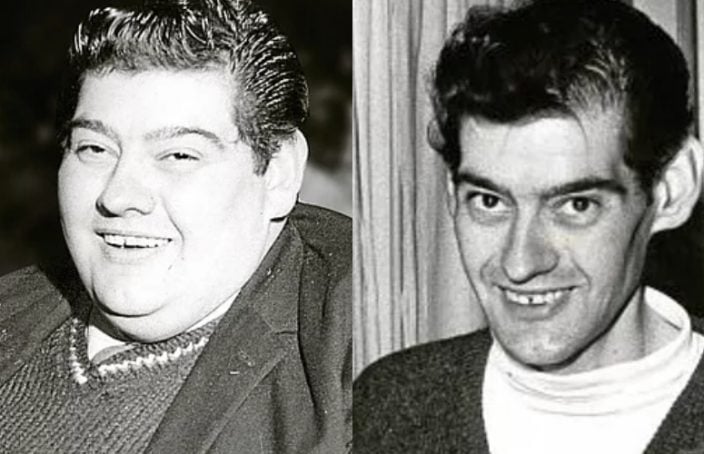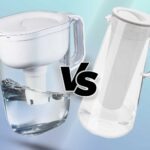Embarking on a six-day water fast can seem like an insurmountable challenge, but what unfolds over those days can be nothing short of transformative.
This article dives deep into my personal voyage through a fasting experience that left me lighter, clearer, and incredibly, with a newfound respect for the simple act of not eating.
Key Takeaways:
- Willpower Workout: The initial days test your resolve, amplify your senses, and can cause physical discomforts like headaches and bad breath.
- Emotional Equilibrium: Managing irritability and harnessing the calming power of meditation becomes crucial.
- Clarity and Euphoria: Mid-fast, expect a mental shift to heightened awareness and a surprising wave of euphoria.
- Physical Transformation: Watch for significantly reduced bloating, weight loss, and an unexpected energy surge.
- Skin Health: Noticeable improvements in skin conditions like ingrown hair and acne.
The Challenge of the First 48 Hours
Battling Hunger and Headaches
The commencement of a water fast is an immediate plunge into the deep end of self-discipline. The first two days are a battleground where every aroma is an enemy and willpower is your only ally. I was hit by intensified food smells, relentless headaches, and a perpetual dry mouth that made my toothbrush my new best friend.
Internal Struggles and Sensory Amplification:
- Headaches: Likely due to dehydration or withdrawal from caffeine and sugars.
- Oral Hygiene Obsession: A heightened awareness of taste and breath.
- Sensory Overload: Smells become stronger, tempting, and testing resolve.
To combat these initial struggles, I found solace in the serene practices of meditation and deep breathing, which provided a necessary distraction from the constant thought of food.
The Emotional Roller Coaster
Finding Solace in Silence
Human interaction can be a source of joy, but it was a minefield of annoyance during a fast. I became a monk of few words, conserving my energy and keeping conversations to a bare minimum. The mindfulness practices that once seemed like optional supplements to my routine became as vital as the water I was consuming.
Coping Mechanisms:
- Meditation: A tool for managing irritability and fostering inner peace.
- Deep Breathing: An immediate resource for refocusing and calming the mind.
The Turning Point: Days Three and Four
A Surge of Clarity and the Euphoria Wave
As the third and fourth day dawned, the fog lifted. It was as if my brain had undergone a system update, rebooting with enhanced focus and a vividness to the world around me. The once persistent hunger pangs receded, replaced by a wave of euphoria that seemed to wash over my entire being. During this period, the chronic bloating I had battled with for so long simply vanished.
Transformative Experiences:
- Heightened Brain Function: Improved focus and mental clarity.
- Sensory Intensification: A more vivid perception of colors and smells.
- Euphoric Sensations: An unexpected feeling of overwhelming joy.
The Final Stretch: Days Five and Six
Weight Loss and Sustained Energy
On the fifth and sixth day, the physical changes became undeniable. Each morning, the scales told a story of rapid weight loss, with 2-3 pounds disappearing daily. Despite the absence of food, my energy levels remained paradoxically high, allowing me to maintain my daily routine as if nothing had changed.
Physical Changes:
- Bloating: Complete resolution of bloating symptoms.
- Weight Loss: Significant and consistent daily weight loss.
- Energy Levels: A surprising maintenance of energy for daily activities.

The Unexpected Skin Benefits
Clear Skin: An Unanticipated Fast Perk
An unexpected and welcome side effect of the fast was the dramatic improvement in my skin health. The painful bumps and ingrown hairs that had been a constant battle receded, leaving behind smooth, clear skin. It was as if my body had found a way to recalibrate and heal itself from the inside out.
Skin Transformations:
- Ingrown Hairs: A decrease in ingrown hairs and skin bumps.
- Smooth Complexion: Overall improvement in skin texture and clarity.
It’s a curious phenomenon, perhaps linked to the body’s shift from inflammation to healing during a fasting state, a testament to the body’s inherent ability to repair when given rest from digestion.
The Biochemical Shift
When the Body Turns to Itself for Fuel
Without its usual intake of macromolecules like fats or carbohydrates, my body had no choice but to burn through the glycogen reserves in my muscles and liver. This is a survival mechanism, one that speaks to our evolutionary past and the body’s remarkable adaptability.
Metabolic Adaptation:
- Glycogen Depletion: The body first utilizes glycogen stores for energy.
- Energy Shift: After glycogen, the body begins to burn fat for fuel.
This process is not without its risks, however, and is a stark reminder of why medical supervision is essential for anyone considering a fast of this nature.
Breaking the Fast: The Return to Food
Introducing Broth: The Gentle Reawakening
On the seventh and eighth day, I gently reintroduced food with chicken soup broth, a nurturing and gentle way to wake up the digestive system. This was followed by the gradual addition of more substantial foods like vegetables, allowing my body to ease back into the normal process of digestion.
Post-Fast Nutrition:
- Chicken Soup Broth: A light, nutritious option to begin refeeding.
- Vegetable Incorporation: Slowly adding more complex foods to the diet.
Reflecting on the Fast
Hindsight and Insights
Looking back, I wish I had documented the process more thoroughly. It was an impromptu journey, one embarked upon without the forethought of recording each step. However, the profound effects were memorable enough to leave a lasting imprint on my approach to health and wellness.
Historical Fasting Insights
Learning from Extremes: The Barbieri Effect
Before starting my fast, I delved into the extraordinary tale of Angus Barbieri, who famously went 382 days without eating back in 1965, shedding 125 kilograms. This remarkable story was a source of intrigue and caution, illustrating the extremes of human fasting. Similarly, the feats of performers like David Blaine, who fasted for 44 days, underscored the dramatic effects prolonged fasting can have on the body.

Historical Fasting Cases:
- Extended Fasting: Understanding the limits of human fasting capabilities.
- Physiological Impact: Insights into the body’s response when pushed to extremes.
These stories serve as stark reminders of the body’s resilience but also its vulnerability when deprived of nourishment for extended periods.
The Risks of Long-term Fasting
Fasting: A Double-Edged Sword
While fasting can lead to profound physical and mental changes, it’s essential to address the potential risks. The body, in survival mode, may turn to muscle tissue and even organs for fuel, a process known as autophagy. This self-consumption can have dire consequences if not properly managed.
Risks and Considerations:
- Muscle and Organ Consumption: Potential breakdown of vital tissues for energy.
- Medical Supervision: The critical importance of professional guidance for extended fasts.
Intermittent Fasting vs. Extended Fasts
Comparing Fasting Approaches
Intermittent fasting is a more approachable and sustainable method for many, involving cycles of eating and fasting that can range from daily time-restricted feeding to fasting for a couple of days each week. This method is in stark contrast to long-term water fasting, which poses greater challenges and risks.
Fasting Methods Compared:
- Intermittent Fasting: Shorter, more frequent cycles of fasting.
- Extended Water Fasts: Longer durations that require careful consideration and supervision.
Autophagy: The Body’s Recycling System
Autophagy, from the Greek meaning “self-eating,” is a process that occurs at the cellular level. It is the body’s way of cleaning out damaged cells, in order to regenerate newer, healthier cells. It’s a form of cellular housekeeping.
- Activation: Autophagy is activated when stressors on the body, such as fasting, lead to a decrease in insulin and an increase in glucagon levels. This state signals the body that it’s in a “fasted” state.
- Process: Within the cells, structures called autophagosomes envelop and break down cellular debris, dysfunctional proteins, and organelles using lysosomal enzymes. This breakdown isn’t just about waste removal; the resultant components, such as amino acids, are repurposed for cell repair and maintenance.
- Benefits: Autophagy plays a role in controlling inflammation, combating microbial infection, and adapting to stress. By removing cellular detritus, it may help protect against diseases like cancer, neurodegeneration, and infections.
Ketosis: The Shift in Fuel Source
Ketosis is another biological process that becomes prominent during fasting. It involves the body switching its energy source from glucose, which is derived from carbohydrates, to ketones, which are derived from fat.
- Initiation: When the body’s glycogen reserves, its usual energy storage, are depleted, the liver starts converting fatty acids into ketones.
- Energy Supply: These ketones then become the primary energy source for many cells, especially in the brain. Unlike fatty acids, ketones can cross the blood-brain barrier and provide energy for brain cells.
- Ketogenic State: This state is the goal of a ketogenic diet, but it’s also a natural consequence of prolonged fasting. Ketosis has been associated with weight loss, reduced inflammation, and potential therapeutic effects on neurological disorders.
The Combined Effect
When the body is in a state of fasting, autophagy and ketosis work together to improve cellular and overall health. Autophagy clears the cells of the materials that could potentially lead to disease and dysfunction, while ketosis provides a more efficient and cleaner-burning fuel that can lead to improved energy levels and cognitive function.
Understanding the Downsides of Extended Water Fasting
The Risks and Realities
Embarking on an extended water fast is not without its share of potential downsides. It’s a journey that can test the limits of one’s physical and mental endurance and can lead to several not-so-desirable outcomes.
Dealing with Detriments:
- Nutrient Deficiencies: Long periods without food can lead to a lack of essential nutrients, risking deficiencies that can have long-term health implications.
- Metabolic Slowdown: The body may slow down its metabolism in response to the perceived famine state, which can complicate efforts to manage weight post-fast.
- Muscle Loss: The body may begin to catabolize muscle for energy once glycogen stores are depleted, leading to muscle wasting.
Psychological and Social Challenges:
- Mood Fluctuations: Significant calorie reduction can lead to mood swings, irritability, and even depression in some individuals.
- Social Isolation: Fasting can interrupt social eating patterns, leading to a sense of isolation and difficulty participating in social events centered around food.
Potential Health Complications:
- Orthostatic Hypotension: A sudden drop in blood pressure upon standing, leading to dizziness and fainting, can occur due to electrolyte imbalances.
- Heart Strain: Prolonged fasting can affect the heart, particularly in the form of arrhythmias or heart muscle loss.
- Refeeding Syndrome: This potentially fatal condition can occur when reintroducing food after a long fast, as the body may have trouble processing and metabolizing the nutrients.
Navigating the Negative Aspects
While water fasting can be a doorway to many positive changes, it’s critical to navigate these negative aspects with careful planning and medical guidance. It’s not a journey to be taken lightly, nor is it suitable for everyone.
- Medical Supervision: Always consult with healthcare providers before, during, and after a fast to mitigate risks.
- Gradual Approach: For those new to fasting, starting with intermittent fasting may be a safer and more manageable approach.
- Balanced Reintroduction: Carefully planning the refeeding process can help avoid refeeding syndrome and ease the body back into normal digestion.
In essence, water fasting is a complex tool for health and self-discovery, one that carries both potential benefits and risks. It should be approached with respect for the body’s needs and a strong emphasis on safety and health.
Conclusion: Is Fasting for Everyone?
A Personal Journey, Not a Universal Solution
Fasting, especially of the duration I experienced, is a deeply personal journey and one that should not be taken lightly. It’s not a one-size-fits-all solution and is certainly not recommended without professional medical advice. The changes I observed were remarkable, but they came with challenges and risks that must be weighed carefully.









